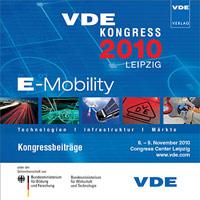Cooling concept involving the phase change for direct drives in mobile work machines
Konferenz: VDE-Kongress 2010 - E-Mobility: Technologien - Infrastruktur - Märkte
08.11.2010 - 09.11.2010 in Leipzig, Deutschland
Tagungsband: VDE-Kongress 2010
Seiten: 6Sprache: EnglischTyp: PDF
Persönliche VDE-Mitglieder erhalten auf diesen Artikel 10% Rabatt
Autoren:
Schuffenhauer, Uwe; Michalke, Norbert (University of Applied Sciences HTW Dresden, Faculty Electrical Engineering, Friedrich-Friedrich-Platz 1, 01069 Dresden, Germany)
Urbanski, Wojciech (Warsaw University of Technology, Faculty Electrical Engineering, Pl. Politechniki 1, 00-661 Warszawa, Poland)
Inhalt:
Direct drives for electric vehicles are both of very high demands on speed characteristics, high torque and marked significant demands on their power density, as well as their use is often performed with the goal of integration into the work item as it is on wheel hub motors or single drives in mobile machines the case. Specific claims are thus also provided to the cooling. For highly utilized machines therefore is common a liquid cooling with water or less oil. Because of the distribution of single drives, the problematic feed lines for additional media and the aspired reduction of mass an additional cooling circuit is not always desirable. There are new solutions by applying innovative cooling concepts such as use of the storage effect of the phase change for the higher losses in case of overload. In the paper a drive concept will be presented derived from the electric direct drive of the threshing cylinder. With the integration of a permanent magnet synchronous machine directly into the work unit the rasp bars are mounted to the external rotor. Through the closed machine construction the heat loss can only led away through the interior of the machine. The presented cooling of the stator may optionally be combined with the presented cooling with phase change. The concept of threshing cylinder drive and cooling will be demonstrated with experimental results. Moreover the possibility of use PCM materials with phase change in the technical area of interest is discussed. To an engine model results are presented of measurements and the possibility of calculation is derived.


